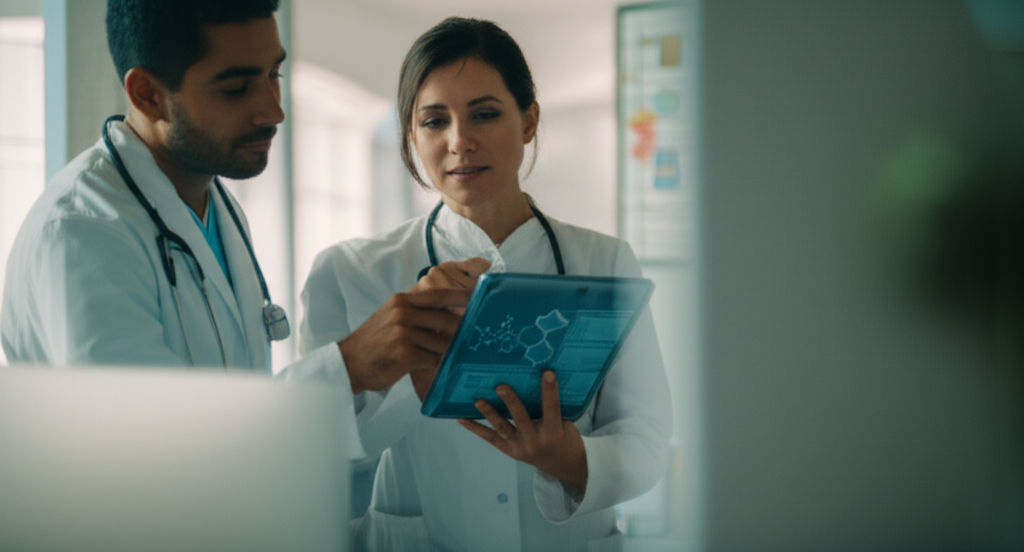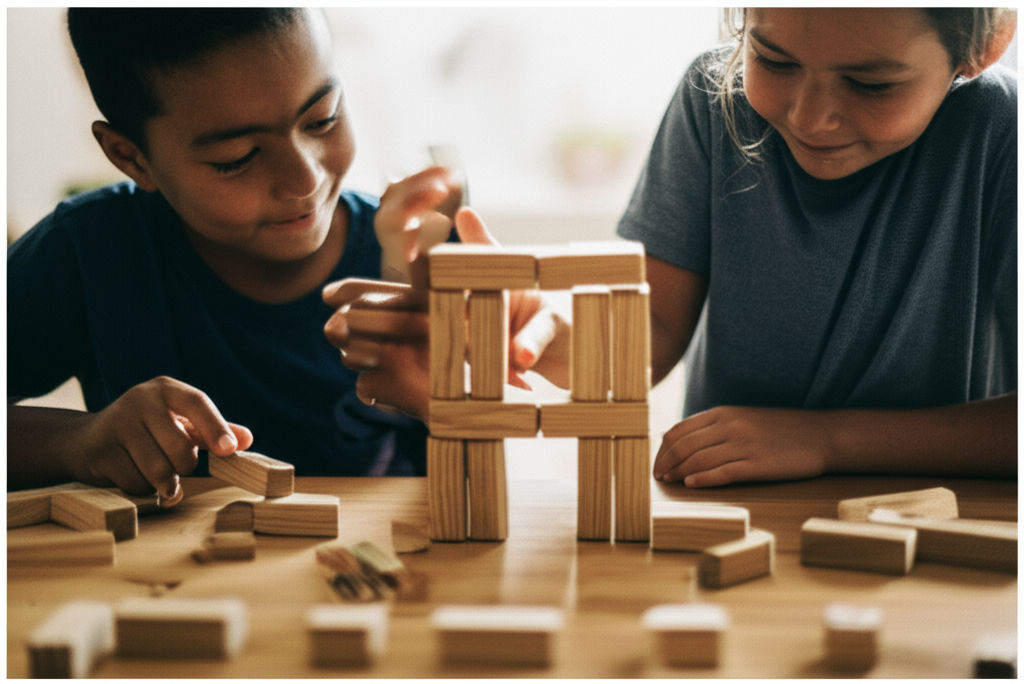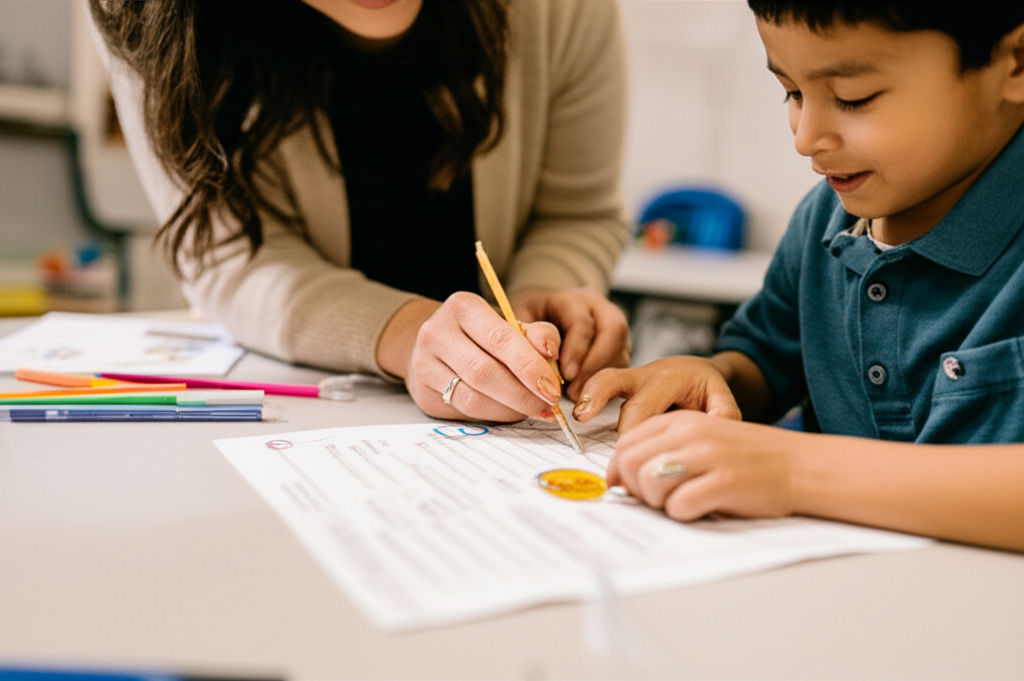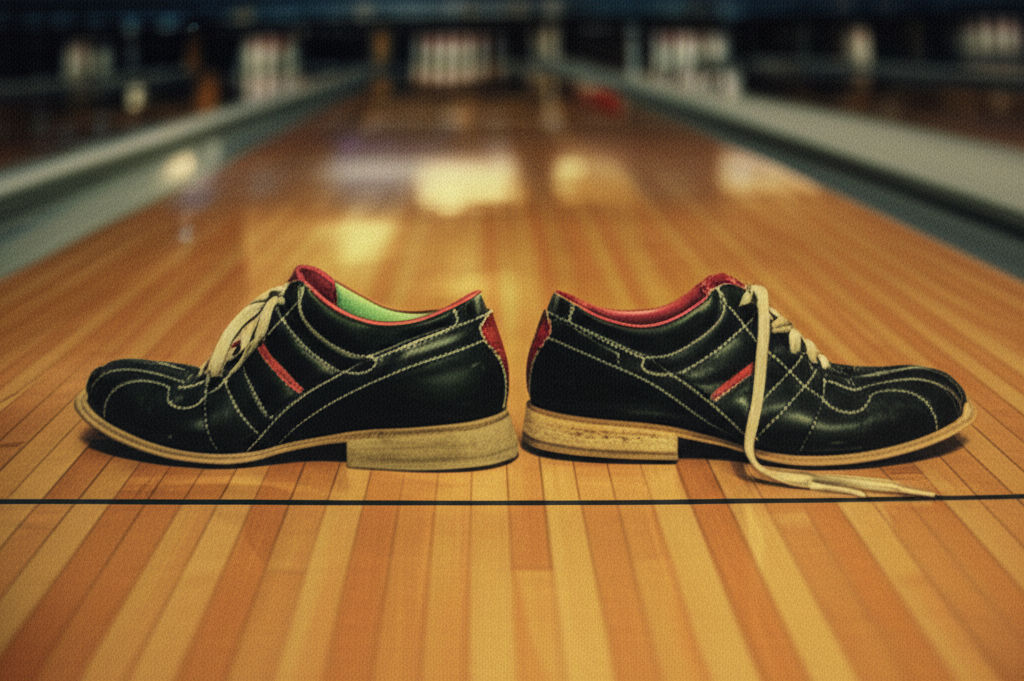What’s New in Junior High Education
Ikhsan Rizki

Photo: Junior high education is changing! Learn about STEM, personalized learning, & 21st-century skills to support your child's success.
What’s New in Junior High Education: Navigating the Evolving Landscape
The world of education is constantly evolving, and perhaps nowhere is this more evident than in junior high. For parents, guardians, and even students themselves, it can feel like a whirlwind of new terms, technologies, and teaching philosophies. Are you wondering how to best support your child through these pivotal years? Do you feel a bit lost amidst discussions of personalized learning, STEM, and social-emotional development?
You're not alone. Junior high education today is vastly different from a generation ago, designed to prepare students not just for high school, but for a rapidly changing global future. This comprehensive guide will demystify the latest trends and innovations, offering clear insights into what’s new in junior high education and how these changes benefit your child.
The Evolving Curriculum: Beyond Rote Learning
Today’s junior high curriculum goes far beyond memorization and traditional subjects. There's a significant shift towards equipping students with skills that are relevant for the 21st century.
Emphasis on STEM and Digital Literacy
Science, Technology, Engineering, and Mathematics (STEM) are no longer just buzzwords; they are foundational pillars in modern junior high education. Schools are integrating these subjects more deeply, often through hands-on projects and interdisciplinary approaches. For example, a science class might incorporate coding to analyze data, or an engineering challenge could involve designing sustainable solutions.
Beyond STEM, digital literacy is crucial. Students are learning not just how to use technology, but how to critically evaluate online information, understand digital ethics, and create digital content responsibly. This includes everything from understanding algorithms to recognizing fake news.
Cultivating 21st-Century Skills
While core subjects remain vital, the focus has broadened to include "soft skills" that are essential for future success. What’s new in junior high education often revolves around:
- Critical Thinking: Encouraging students to question, analyze, and solve problems independently, rather than just recall facts.
- Collaboration: Working effectively in teams, understanding diverse perspectives, and sharing responsibilities.
- Communication: Developing strong verbal and written expression, and effective listening skills.
- Creativity: Fostering innovative thinking and problem-solving through various mediums.
These skills are woven into daily lessons, preparing students for complex challenges in higher education and future careers.
Innovative Teaching Methodologies: Engaging Every Learner
Gone are the days when a teacher stood at the front of the class delivering lectures for hours. Modern junior high classrooms are dynamic environments employing diverse teaching strategies to cater to individual learning styles.
The Rise of Personalized Learning Paths
One of the most significant shifts in what’s new in junior high education is the move towards personalized learning. This approach recognizes that every student learns at their own pace and in their own way. How does it work?
- Tailored Content: Students might access learning materials specifically chosen to match their current understanding and learning style.
- Flexible Pacing: Some students might move ahead quickly in certain subjects, while others receive more support where needed.
- Student Choice: Empowering students to have a say in how they learn and what they focus on within a given topic.
This often involves technology, but the core idea is to make learning more relevant and effective for each child.
Project-Based and Experiential Learning
Instead of isolated lessons, many junior high schools are embracing project-based learning (PBL). Students work on extended projects that require them to apply knowledge and skills to real-world problems. Imagine a history class where students research and design a museum exhibit, or a math class that uses real-world data to solve a community issue.
Experiential learning takes this a step further, often involving field trips, simulations, or hands-on experiments that provide direct experience with the subject matter. These methods make learning more memorable and meaningful.
Blended Learning Environments
Many schools are adopting blended learning, which combines traditional face-to-face instruction with online learning components. This might mean:
- Students completing some assignments or accessing resources online at home.
- Using digital tools in the classroom for interactive lessons.
- Teachers utilizing online platforms to provide individualized feedback and track progress.
This approach offers flexibility and can enhance engagement by leveraging the best of both worlds.
Technology's Transformative Role in Junior High
Technology is no longer just a tool; it's an integral part of the learning experience, profoundly influencing what’s new in junior high education.
AI and Adaptive Learning Tools
Artificial Intelligence (AI) is beginning to play a role in education, particularly through adaptive learning platforms. These platforms can:
- Identify a student's strengths and weaknesses.
- Provide immediate feedback.
- Suggest personalized learning paths and resources.
This allows for highly individualized instruction, ensuring students are challenged appropriately and receive targeted support.
Virtual Reality and Immersive Experiences
Imagine exploring ancient Rome, dissecting a frog, or journeying through the human body, all without leaving the classroom. Virtual Reality (VR) and Augmented Reality (AR) are making immersive learning experiences possible, bringing abstract concepts to life in engaging ways. These technologies can make complex subjects more accessible and exciting for junior high students.
Digital Citizenship and Online Safety
With increased technology use comes a greater emphasis on digital citizenship. Junior high students are being taught about:
- Responsible online behavior.
- Privacy and data security.
- Recognizing and reporting cyberbullying.
- Understanding their digital footprint.
This critical component ensures students are not just tech-savvy, but also safe and ethical online users.
Prioritizing Student Well-being: Beyond Academics
Recognizing the unique developmental stage of junior high students, schools are placing a much stronger emphasis on holistic well-being. This is a crucial aspect of what’s new in junior high education.
Social-Emotional Learning (SEL) Programs
Social-Emotional Learning (SEL) is now a foundational part of many junior high curricula. SEL programs teach students how to:
- Understand and manage their emotions.
- Set and achieve positive goals.
- Feel and show empathy for others.
- Build and maintain healthy relationships.
- Make responsible decisions.
These skills are vital for navigating the social complexities of adolescence and building resilience.
Mental Health Support and Awareness
There's a growing awareness of mental health challenges among adolescents. Junior high schools are increasingly:
- Providing accessible mental health resources and counseling services.
- Educating students and staff about mental health awareness.
- Creating supportive environments where students feel comfortable seeking help.
This proactive approach aims to foster a nurturing and safe space for students to thrive emotionally as well as academically.
Modern Assessment Approaches: Measuring True Understanding
How students are assessed is also undergoing significant changes. The goal is to gain a more comprehensive understanding of a student's learning, moving beyond single-point tests.
Moving Beyond Standardized Tests
While standardized tests still exist, there's a trend towards more diverse assessment methods. What’s new in junior high education includes:
- Portfolios: Collections of student work over time, showcasing growth and mastery.
- Presentations: Allowing students to demonstrate understanding through verbal and visual communication.
- Performance Tasks: Requiring students to apply knowledge and skills to complete a specific task or solve a problem.
These methods provide a richer picture of a student's abilities and progress.
Formative Assessment and Feedback Loops
Formative assessment is ongoing assessment used by teachers to monitor student learning and provide continuous feedback. This isn't about grades; it's about:
- Identifying areas where students need more support.
- Adjusting teaching strategies in real-time.
- Empowering students to understand their own learning process and make improvements.
This constant feedback loop helps students learn from their mistakes and deepen their understanding.
Conclusion
The landscape of junior high education is undergoing a profound transformation, driven by a commitment to prepare students for a future that demands adaptability, critical thinking, and strong social-emotional skills. From innovative teaching methods and advanced technology integration to a renewed focus on student well-being, what’s new in junior high education is truly exciting. These changes are designed to create a more engaging, personalized, and effective learning experience, empowering every student to reach their full potential.
We hope this article has shed light on these important developments. What changes have you noticed in your child's junior high experience? Share your thoughts and questions in the comments below!
Frequently Asked Questions (FAQ)
Q1: How can parents stay informed about these changes in junior high education?
A1: The best ways to stay informed are to regularly check your school's website, attend parent-teacher conferences, join school parent associations, and subscribe to school newsletters. Don't hesitate to reach out directly to teachers or school administrators with specific questions.
Q2: Are these changes happening in all junior high schools?
A2: While the general trends in what’s new in junior high education are widespread, the pace and specifics of implementation can vary significantly between schools and districts. Factors like funding, local priorities, and community needs can influence which innovations are adopted and how quickly.
Q3: What are the biggest benefits of these new approaches in junior high?
A3: The primary benefits include more engaged and motivated students, deeper understanding of concepts, development of crucial 21st-century skills (like critical thinking and collaboration), personalized learning experiences, and a greater emphasis on student well-being, leading to more resilient and well-rounded individuals.
Q4: How does technology impact student-teacher interaction in junior high?
A4: Technology doesn't replace student-teacher interaction; it often enhances it. Tools like adaptive learning platforms can free up teachers to provide more individualized support and one-on-one coaching. Online collaboration tools can facilitate group projects, while digital communication platforms can improve parent-teacher communication.
Citations: https://www.nassp.org/2019/07/22/stem-education-in-the-middle-grades/ https://www.iste.org/areas-of-focus/digital-citizenship https://casel.org/fundamentals-of-sel/ https://www.edutopia.org/article/how-technology-can-improve-student-teacher-relationships/
Business
View All
November 19, 2025
Why Deloitte Is Laying Off ConsultantsUnderstand why Deloitte is laying off consultants. Economic headwinds, post-pandemic overhiring, and shifting client needs are key factors.
Ikhsan Rizki

August 11, 2025
Review of HON Office FurnitureChoosing office furniture? Our HON review covers reliability, affordability, and who it's best for, helping you pick the right fit for your workspace.
Ikhsan Rizki

August 31, 2025
Best Ways to Find Costco Coupons in 2025Unlock maximum Costco savings in 2025! Discover how to find Instant Savings, use the app, and get email deals for ultimate discounts.
Ikhsan Rizki

November 5, 2025
Virginia Business Search Made EasyUnlock Virginia business info effortlessly! Our guide simplifies SCC searches for name availability, due diligence, and company details. Get reliable results.
Ikhsan Rizki

August 14, 2025
Business Lessons from Busy SpiderUnravel the secrets of success! Discover how a spider's strategic web design, persistence, and efficiency can transform your business.
Ikhsan Rizki

September 10, 2025
How to Style a Risky Business OutfitElevate your office style! Master the "risky business outfit," balancing professionalism with a confident, fashion-forward edge.
Ikhsan Rizki
Economy
View AllUnpack "full employment" beyond zero unemployment. Discover its true meaning, impact on the economy, and how it shapes policy. Master key economic concepts.
Ikhsan Rizki
Decatur, GA on a budget? Learn strategies to find an affordable, quality hotel stay. Enjoy your trip without sacrificing comfort or location!
Ikhsan Rizki
Find comfortable, clean, and affordable economy lodges for your next trip. Our guide helps you discover budget-friendly stays near you!
Ikhsan Rizki
Unlock motivation with the power of token economies! Learn the psychology behind this system to drive positive behavior and achieve goals.
Ikhsan Rizki
Upgrade your long-haul flight! Discover ITA Airways Premium Economy: enhanced comfort, more space, and amenities without the business class price tag. Is it for...
Ikhsan Rizki
Is Singapore Airlines Economy a cut above? Uncover its premium comfort, world-class entertainment, and renowned service in this guide.
Ikhsan Rizki
Education
View AllMaster "Physical Education" in Spanish! This guide covers "Educación Física," "EF," and regional variations like "Gimnasia." Speak confidently!
Read MoreDiscover special education teacher salaries! Learn national averages, key influencing factors, and strategies to boost your income in this rewarding career.
Read MoreUncover the UGA Marine Center in Savannah, GA. Dive into groundbreaking marine research, education, and conservation protecting Georgia's coast.
Read MoreEmpower your child's special education journey. An IEE offers an unbiased second opinion to ensure their needs are truly met.
Read MoreShape the future of education! Explore Director of Education jobs, key responsibilities, and career paths for experienced leaders.
Read MoreUnpack why Democratic AGs are suing the Education Dept. Learn the key issues, from student loans to policy, and their impact on American education.
Read MoreHealth
View All
September 24, 2025
Pueblo Community Health ServicesDiscover Pueblo Community Health Services (PCHS): accessible, comprehensive medical, dental, & behavioral health for all in Pueblo. Your guide to quality care.
Ikhsan Rizki

August 24, 2025
LifeStance Health Reviews TodayConsidering LifeStance Health? Get real patient insights. Explore services, reviews, and tips to decide if this mental health platform is right for you.
Ikhsan Rizki

November 6, 2025
Ponce Health Sciences University InfoPonce Health Sciences University (PHSU): A distinguished choice for health education, offering diverse programs, cutting-edge research & community focus.
Ikhsan Rizki

November 29, 2025
San Jose Behavioral ServicesSan Jose behavioral services: Your guide to mental wellness in Silicon Valley. Find local support & thrive amidst life's pressures.
Ikhsan Rizki

October 26, 2025
Follow My Health Northwell Login TipsGet seamless access to your Follow My Health Northwell patient portal. Our guide offers tips to resolve login issues and manage your health records with ease.
Ikhsan Rizki

August 24, 2025
Top 25 Health Science Jobs for 2025Unlock your future! Discover the top 25 in-demand health science jobs for 2025. Find a fulfilling and stable career in healthcare.
Ikhsan Rizki
Popular Articles
View All
1
2
3
4
5
6
7
8
9
10
Lifestyle
View All
November 2, 2025
What is HM Lifestyle on your credit card
Mysterious "HM Lifestyle" charge on your card? Unravel what it means, from H&M purchases to potential fraud, and how to investigate.

September 18, 2025
Life With a Five Million Dollar Net Worth
Ever wonder what life with $5M net worth is *really* like? Uncover the true realities, responsibilities, and financial freedom beyond the luxury.

November 24, 2025
Inside Red Monkey Lifestyle Brand
Red Monkey Lifestyle Brand: Authentic rock & roll style handcrafted in America. Unique, vintage-inspired accessories for those who stand out.

October 1, 2025
The Passage Hotel Is a Must Stay
The Passage Hotel Basel: Your must-stay destination for luxury, comfort, and an unbeatable city center location. Unforgettable travel awaits!

August 13, 2025
Manchester Adult Lifestyle Overview
Unlock your best life in Manchester! This guide covers top neighborhoods, career insights, leisure, and community to help you thrive in this vibrant city.

October 8, 2025
Bose Model 5 Music System
Explore the Bose Model 5 Music System. Get immersive, room-filling sound from a sleek, compact home audio solution. Rediscover your music!

November 8, 2025
Inside the world of Lifestyle Inc
Explore "Lifestyle Inc," the vast ecosystem shaping modern life. Understand its influence, make mindful choices, and take control of your well-being.

November 18, 2025
Are Lifestyles Prices Worth It
Are your lifestyle choices worth the cost? Decode "lifestyle prices" to ensure you're getting true value from your spending.
Sports





Travel
View All
October 31, 2025
Tex Best Travel Center Roadside Stop
Find the perfect pit stop in Texas! Tex Best Travel Center offers clean restrooms, diverse fuel, and food to redefine your road trip experience.

October 4, 2025
EOS Vanilla Cashmere Hand Cream Travel Size
Banish dry travel hands! Get soft, hydrated skin on the go with EOS Vanilla Cashmere Hand Cream Travel Size. Your compact hydration secret.

September 27, 2025
Prayer for Safe Travel
Find peace and protection for your journey. Discover how a powerful prayer for safe travel can reduce anxiety and bring divine peace of mind.

August 5, 2025
Direct Line travel insurance
Direct Line travel insurance: No new policies. Existing customer? This guide helps you manage your policy, understand coverage, & navigate claims.

October 4, 2025
Fellow Travelers Book on Love and Politics
Discover Thomas Mallon's "Fellow Travelers," a poignant novel masterfully intertwining forbidden love with McCarthy-era political paranoia.

November 7, 2025
Lululemon Travel Bag for Active Lifestyles
Elevate your active travel! Find the ultimate Lululemon bag for seamless organization, durability, and style on all your adventures.

















